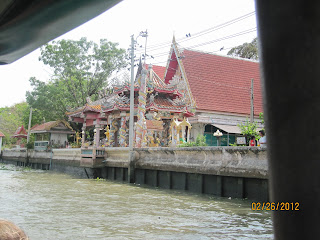Week 4 was filled with a lot of anxiety, tension, (we had to submit our first paper on Wednesday, March 7th) and for some, the week's instruction provided a very worthwhile overview of what it takes to be a good facilitator, mediator, and negotiator. Our instructors this week included Jan Sunoo and Pat Dunn from the Federal Mediation and Conciliation Service (FMCS), which is an US agency that is directly under the President, created several years ago through the Labor Relations Act. The purpose is to provide mediation services to companies that have collective bargaining agreements and need mediation to resolve union and management issues.
The week was filled with a number of new and not so new concepts, but also with lots of practice in facilitation, mediation, and negotiation. However, the highlight was what both Jan and Pat brought to us with respect to their other talents—ukulele, harmonica, singing, voice imitation, and embroidery. What a talented pair. Members of the class that wanted to learn the ukulele also had a chance for daily lessons at the end of our lunch breaks.
On Friday night a group of us accompanied Jan to a Korean restaurant—another great experience. Jan is of Korean heritage, so he selected all the food and introduced us to their rice wine (very smooth going down) and the Korean custom for pouring drinks. The requirement is to use two hands to hold your glass, while another holds the bottle with two hands while pouring.
On Friday night a group of us accompanied Jan to a Korean restaurant—another great experience. Jan is of Korean heritage, so he selected all the food and introduced us to their rice wine (very smooth going down) and the Korean custom for pouring drinks. The requirement is to use two hands to hold your glass, while another holds the bottle with two hands while pouring.
During week 5 we were off to Mae Sot for our first field study. This was an exciting experience for many of us. I had to start my malaria pills for this trip, but surprisingly, there were not as many mosquitoes as I anticipated. The weather was hot—close to 1000 most of the days, although not as humid as Bangkok.
When we departed for our field study in Mae Sot on March 11th, I don’t think any of us understood what we would see and experience once we reached our destination. Although we were briefed on the issues that we would focus on during the week and had readings to complete prior to our departure, there is nothing like “seeing” with our own eyes the circumstances surrounding the Burmese displaced population living along the Burma-Thai border.
For me, I saw the good, the bad, and the ugly—all rolled into one ball. Basic human rights are missing, poor living and working conditions exist, and they are harassed by the Thai authorities. And, for many, prior to leaving their country of Burma, they were subjected to violence and atrocities from the Burmese military rulers. I could go on and on with respect to the harsh conditions and discrimination that the Burmese in Thailand experience, but here is not the place for a lengthy account of what we saw on our field study.
 |
| Jan at the Korean restaurant |
During week 5 we were off to Mae Sot for our first field study. This was an exciting experience for many of us. I had to start my malaria pills for this trip, but surprisingly, there were not as many mosquitoes as I anticipated. The weather was hot—close to 1000 most of the days, although not as humid as Bangkok.
When we departed for our field study in Mae Sot on March 11th, I don’t think any of us understood what we would see and experience once we reached our destination. Although we were briefed on the issues that we would focus on during the week and had readings to complete prior to our departure, there is nothing like “seeing” with our own eyes the circumstances surrounding the Burmese displaced population living along the Burma-Thai border.
For me, I saw the good, the bad, and the ugly—all rolled into one ball. Basic human rights are missing, poor living and working conditions exist, and they are harassed by the Thai authorities. And, for many, prior to leaving their country of Burma, they were subjected to violence and atrocities from the Burmese military rulers. I could go on and on with respect to the harsh conditions and discrimination that the Burmese in Thailand experience, but here is not the place for a lengthy account of what we saw on our field study.
The good part of what I saw on our field study has more to do with that which is not tangible. I saw resilience and innate ability to maintain hope in what has, otherwise, been a sea of despair. This is particularly evident in the school, the health clinic, and the various CBOs that have been established by the Burmese to help themselves. These were examples of how people still need a sense of social order, and even in chaos, they will strive to establish that order.
.JPG)
.JPG)
.JPG)
.JPG)






